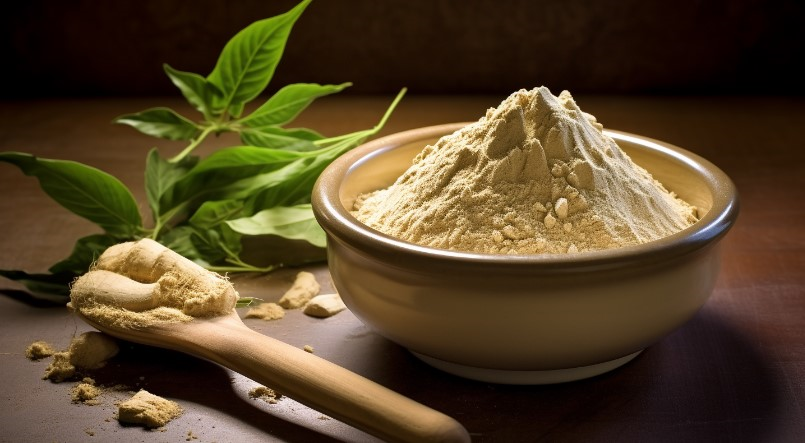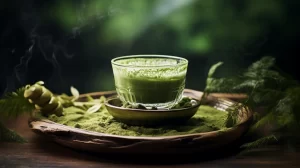Berbagai penggunaan ginseng

Ginsenoside Rg3 (Rg3) is one of the most important ingredients in the Chinese herb ginseng, and is an effective antioxidant, anti-inflammatory, anti-cancer, anti-fatigue and heart-protecting drug with remarkable effects. Recently, the use of Rg3 in the skin has begun to gain considerable research attention, and Rg3 is believed to have therapeutic benefits in malignant melanoma, atopic dermatitis, skin aging, and skin healing. In addition, several studies have shown that Rg3 can be used as an early intervention to treat patients with hypertrophic scars (HS) by promoting wound healing early and inhibiting scar hyperplasia late. Previous studies on the pharmacological effects of Rg3 can provide theoretical basis for its application in skin therapy. However, Rg3 is a crystalline drug, almost insoluble in water, and only slightly soluble in chloroform mixed with methanol and dimethyl sulfoxide (DMSO) and other organic solvents; This greatly limits the bioavailability and formulation development of Rg3. Therefore, the preparation of an effective Rg3 drug delivery agent is essential to increase the solubility of Rg3 and improve absorption.
In this paper, the preparation of temperature-sensitive injectable hydrogel containing Rg3 with SDS as gelling agent was studied. Considering both safety and system simplicity, hydrogels based on Bolosham’s chemical structure and temperature sensitive properties were selected to use hyaluronic acid and chitosan with Rg3 to accelerate the wound healing process. The hydrogel has unique porous morphology, good biocompatibility, controllable Rg3 release, good antioxidant and antibacterial activity, and is ideal for wound healing. In vivo wound closure experiment data showed that the addition of Rg3 temperature sensitive hydrogel can promote wound contraction, re-epithelialization, collagen deposition and angiogenesis, and accelerate wound healing process. The increased expression of autophagy protein suggested that Rg3 hydrogel could enhance autophagy and promote wound healing. High-throughput data analysis showed that the bionic hydrogel added with Rg3 increased the diversity of skin wound microorganisms and decreased the abundance of harmful bacteria. Overall, temperature-sensitive injectable hydrogels containing Rg3 show great promise in wound healing applications.
American ginseng
American ginseng is sweet, slightly bitter, and cool in nature. It has the effects of nourishing yin and replenishing qi, clearing away heat and promoting fluid production. It is suitable for people with both qi and yin deficiency and heat.
【Indications】Fatigue, dry mouth and throat, flushed complexion, irritability and internal heat, lung deficiency and prolonged cough, astringent eyes without tears, hot hands, feet and heart, dry stool, etc.
Raw sun-dried ginseng
Raw sun-dried ginseng is ginseng that is naturally sun-dried or artificially dried. Its processing method results in less loss of active ingredients and volatile oil content, and has the effects of tonifying vitality, spleen and lungs, and its effect is relatively mild.
[Indications] Fatigue, loss of appetite, upper abdominal fullness, vomiting and diarrhea, thirst for fluids and wounds, restlessness, insomnia and dreaminess, palpitation and forgetfulness, etc.
Red ginseng
Red ginseng is ginseng that is steamed and then sun-dried or dried to produce a deep red color. It is warm in nature and has obvious effects on replenishing qi and yang. It is the first choice tonic for those with weak yang.It has the effects of warming and replenishing yang energy, nourishing blood and promoting fluid production, nourishing the heart and calming the mind.
【Indications】Fatigue, pale complexion, cold body and cold limbs, coughing and shortness of breath, diarrhea at midnight, insomnia and dreaminess, metrorrhagia in women, frequent nocturia, impotence and premature ejaculation, etc.
[Modern Application] Low immunity, fatigue syndrome, sexual dysfunction, anemia, diabetes, etc.
fresh ginseng
The total saponin ratio of fresh ginseng is 27% higher than that of dried ginseng. It completely preserves the natural essence of ginseng (the active ingredient of ginseng). In addition to nourishing and strengthening the body, it also has the sweet and delicious taste of ginseng, making it a good health product.
[Indications] Fresh ginseng can improve the body’s tolerance to high loads such as cold, heat, and infectious diseases, and promote the regeneration of enzymes in the body. This aspect is better than dried ginseng. And there will be no burning phenomenon, and everything else is the same as raw sun exposure.
Ekstrak Ginseng Ginsenosides
Understory ginseng is artificially planted into a mixed coniferous and broad-leaved forest composed of trees, shrubs, and weeds. It grows naturally without artificial intervention. It is the ginseng closest to wild ginseng.
Linxia ginseng has extremely high medicinal value.
It can greatly replenish vitality and strengthen the functions of human organs.
Produces body fluids and quenches thirst, produces blood and nourishes blood, nourishes and beautifies the skin. It refreshes the mind, calms the mind and improves the mind.
Improve brain thinking ability, enhance memory, and improve resistance and immunity.
Anti-fatigue, anti-aging, anti-severe cold, anti-high temperature, anti-cancer and disease prevention.
wild ginseng
[Function] Tonify vitality, strengthen body fluids, promote body fluids, and soothe the mind.
【Indications】
1. Women have metrorrhagia, postpartum prolapse, and long-term deficiency.
2. Premature ejaculation, slippery semen, yin deficiency, night sweats, dizziness and headache.
3. Deficiency due to strain, lack of food, fatigue, nausea and vomiting.
4. It has the effect of replenishing deficiency, relieving fatigue, and replenishing vitality. It can strengthen the body and prolong life.
Skin is the largest and most extensive organ in the human body. The skin acts as a wall between the organism and the external environment, protecting the underlying organs, performing physiological functions necessary for survival, and resisting external pathogens that are constantly exposed to potential harm in daily life. Wounds are one of the most common skin conditions and represent discontinuity and loss of function in epithelial integrity. The high incidence of skin lesions places a heavy burden on the individual patient’s body and the medical economy, and even requires long and arduous treatment, which may cause cosmetic damage or death.
Wound healing is a complex, coordinated process that is affected by many intrinsic and exogenous imbalances and is an evolutionarily dynamic biological process necessary for species survival. Includes tightly controlled biochemical and cellular events such as inflammation, proliferation, and remodeling that occur sequentially in a continuous and sometimes overlapping fashion. The main goal of tissue regeneration in wound healing is the speed and quality of healing to effectively regenerate new healthy epidermis and lead to better cosmetic results. Wound management preparation should actively regulate the three stages of wound healing. During the proliferative phase of many wound healing, a key concomitant activity is inducing blood vessel growth, a process known as angiogenesis. Epithelialization is another important component of wound healing. Reepithelialization begins with the migration of keratinocytes and is involved in cellular and molecular processes that initiate, maintain, and complete epithelialization, thereby controlling wound healing and repair events. During the proliferative and remodeling stages, various cell types are widely activated to induce the production of growth factors, followed by wound recovery through re-epithelialization, collagen synthesis, matrix deposition, and vascular remodeling.
With the increased understanding of previously unknown cellular and molecular pathways involved in the wound healing process, extensive further development based on new biomaterials and materials manufacturing technologies is also underway. At present, researchers are not only committed to rapidly expanding the research scope of wound dressings, such as sponges, foams, electrospun nanofibers, membranes, hydrogels, etc., but also pay close attention to exploring their functions and exerting their advantages in treatment. Hydrogels are typically synthesized from natural or synthetic cross-linked polymers and are defined as highly hydrated three-dimensional (3D) connected network structures that have excellent expansion capabilities and bind water or biological fluids several times over, which allows them to be used as carriers for the delivery of small and large molecule drugs, giving them a variety of applications in the biomedical field. Due to their unique properties, hydrogel networks can be cast in a variety of sizes and shapes to meet the needs of effective targeted drug delivery and rapid wound closure. In particular, thermosensitive hydrogels are considered promising candidates for partial application of topical therapy, which rapidly and reversibly perform sol-gel transformation behaviors in response to changes in ambient temperature, imbuing drug delivery capabilities with controlled local spatial and temporal effects, as well as plasticity, biocompatibility, biodegradability, and tissue similarity to improve drug bioavailability.
Backvita



